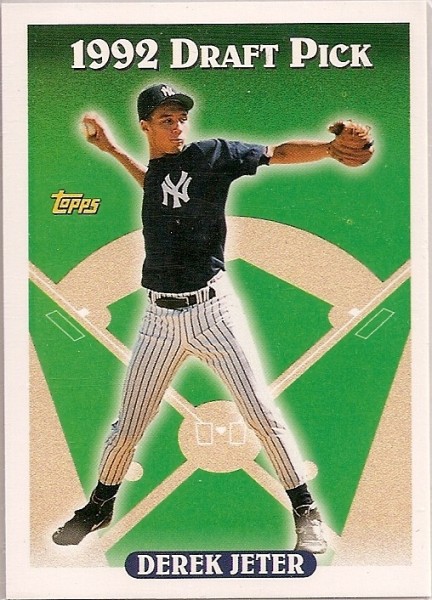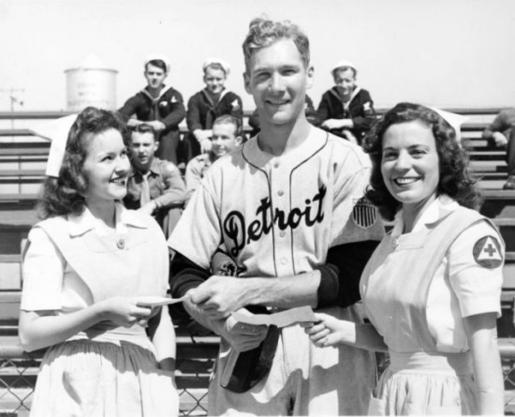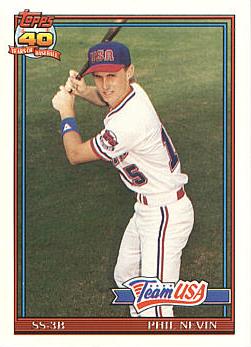Was Derek Jeter Not Drafted by the Houston Astros in 1992 Over a Difference of $100,000?
Here is the latest in a series of examinations into urban legends about baseball and whether they are true or false. Click here to view an archive of the baseball urban legends featured so far.
BASEBALL URBAN LEGEND: Derek Jeter was not drafted by the Astros in 1992 because of an Astros price limit for the pick that ended up being just $100,000 less than what the Yankees signed Jeter for.
Typically, when the story of Derek Jeter being drafted in 1992 comes up, there’s two different takes on it.

The first is that the teams ahead of the Yankees, who drafted Jeter sixth, just screwed up in their talent evaluations – that they did not realize that Jeter would be such a good player as he turned out to be.
The second is that teams ahead of the Yankees realized that Jeter WOULD likely be a good player, but since he was a high school player, the Yankees just overwhelmed Jeter with cash (as the Yankees occasionally are wont to do) and that’s why no one drafted him before the Yankees – no one else could afford that much money.
The actual story, though, is a bit different.
The late Hal Newhouser was the most dominant pitcher of the World War II era. Due to a leaky heart valve, the otherwise healthy Newhouser was repeatedly turned down by the military for service in World War II (he kept trying to sneak in, though). So when you had an excellent pitcher left behind in a league decimated by players being drafted, well, the recipe for some gaudy numbers was there, and Newhouser mixed it up quite nicely in 1944 and 1945, winning back-to-back American League Most Valuable Player awards, the only pitcher to ever win back-to-back MVPs. Newhouser also helped pitch the Detroit Tigers to the 1945 World Championship (a series now best known as the last time that the Chicago Cubs ever played for the title).

Newhouser ended up proving the skeptics who thought his numbers were strictly war-driven wrong, when he nearly won a THIRD MVP in a row with yet another dominant season in 1946 (he finished a close second to Ted Williams).
Newhouser was a seven-time All-Star and in 1992, he was inducted in the Baseball Hall of Fame.
In 1992, Newhouser was working for the Houston Astros as a scout.
When he discovered Derek Jeter playing for Kalamazoo Central High School, he insisted to his superiors that this kid would have to be their pick with the #1 pick in the 1992 draft.
And, more or less, his superiors agreed with him – Jeter WAS their #1 target.
However, they had determined that they were not going to spend more than $700,000 on any player. They felt that Jeter, who had the option of going to college (he had a full scholarship to the University of Michigan) would use that college scholarship as leverage against a signing bonus of over $1 million dollars. They were not prepared to pay anything more than $700,000.
California State University, Fullerton third baseman Phil Nevin, the 1992 College World Series MVP, was willing to take $700,000, so Houston planned to take him #1 (Nevin ended up having a fine 12-year career, making the All-Star team in 2001).

Newhouser argued that Jeter was not going to sign for anything close to $1,000,000 and that he could get him signed for $750,000.
The Astros either did not believe that Newhouser could do that or they did not want to go even $50,000 over their price limit.
Either way, they decided to pass on Jeter.
Jeter then went to the Yankees at #6, who ended up signing him for $800,000, just $100,000 more than what the Astros paid Nevin, and actually $175,000 LESS than what the Baltimore Orioles paid their first pick, #4 overall, Jeffrey Hammonds.
Newhouser was so sure that he was right that he actually quit his job over the decision, figuring that if he could not convince the Astros to draft Jeter then what was the point of working for them?
Newhouser died in 1998, but he lived long enough to both see his number retired by the Tigers (in 1997) and also see his faith in Jeter justified by Jeter’s 1996 Rookie of the Year season.
The legend is…
STATUS: True
Read here for a very good take on the situation by Buster Olney.
Feel free (heck, I implore you!) to write in with your suggestions for future urban legends columns! My e-mail address is bcronin@legendsrevealed.com





